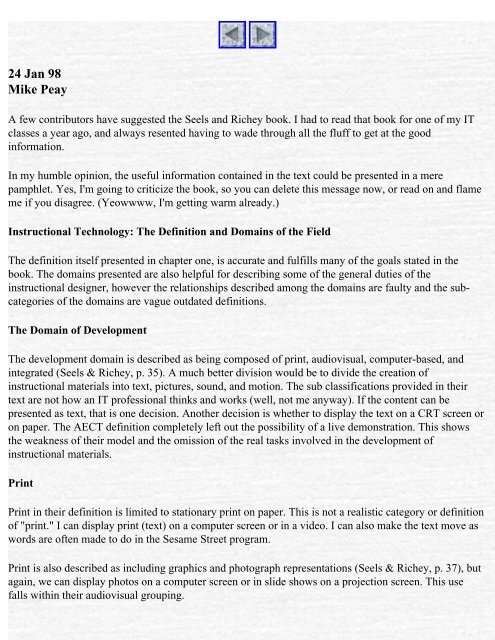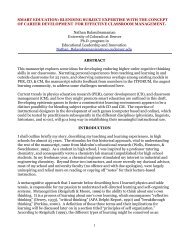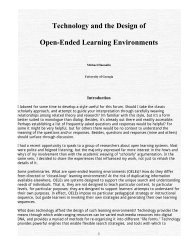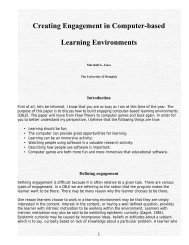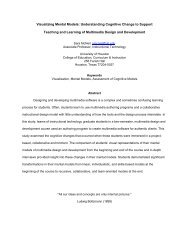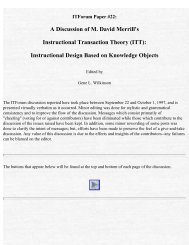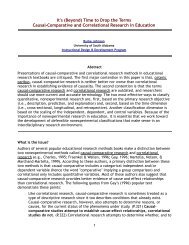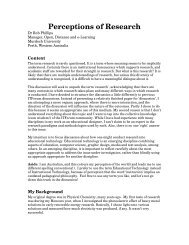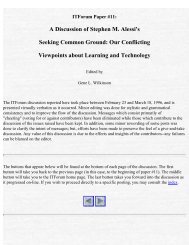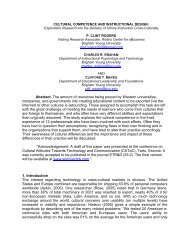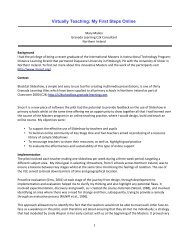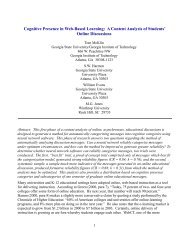21 Jan 98 Ernie Franklin - Instructional Technology Forum ...
21 Jan 98 Ernie Franklin - Instructional Technology Forum ...
21 Jan 98 Ernie Franklin - Instructional Technology Forum ...
Create successful ePaper yourself
Turn your PDF publications into a flip-book with our unique Google optimized e-Paper software.
24 <strong>Jan</strong> <strong>98</strong><br />
Mike Peay<br />
A few contributors have suggested the Seels and Richey book. I had to read that book for one of my IT<br />
classes a year ago, and always resented having to wade through all the fluff to get at the good<br />
information.<br />
In my humble opinion, the useful information contained in the text could be presented in a mere<br />
pamphlet. Yes, I'm going to criticize the book, so you can delete this message now, or read on and flame<br />
me if you disagree. (Yeowwww, I'm getting warm already.)<br />
<strong>Instructional</strong> <strong>Technology</strong>: The Definition and Domains of the Field<br />
The definition itself presented in chapter one, is accurate and fulfills many of the goals stated in the<br />
book. The domains presented are also helpful for describing some of the general duties of the<br />
instructional designer, however the relationships described among the domains are faulty and the subcategories<br />
of the domains are vague outdated definitions.<br />
The Domain of Development<br />
The development domain is described as being composed of print, audiovisual, computer-based, and<br />
integrated (Seels & Richey, p. 35). A much better division would be to divide the creation of<br />
instructional materials into text, pictures, sound, and motion. The sub classifications provided in their<br />
text are not how an IT professional thinks and works (well, not me anyway). If the content can be<br />
presented as text, that is one decision. Another decision is whether to display the text on a CRT screen or<br />
on paper. The AECT definition completely left out the possibility of a live demonstration. This shows<br />
the weakness of their model and the omission of the real tasks involved in the development of<br />
instructional materials.<br />
Print<br />
Print in their definition is limited to stationary print on paper. This is not a realistic category or definition<br />
of "print." I can display print (text) on a computer screen or in a video. I can also make the text move as<br />
words are often made to do in the Sesame Street program.<br />
Print is also described as including graphics and photograph representations (Seels & Richey, p. 37), but<br />
again, we can display photos on a computer screen or in slide shows on a projection screen. This use<br />
falls within their audiovisual grouping.


